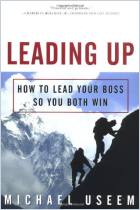Зарегистрируйтесь на getAbstract, чтобы получить доступ к этому краткому изложению.

Зарегистрируйтесь на getAbstract, чтобы получить доступ к этому краткому изложению.
Chris Warner and Don Schmincke
High Altitude Leadership
What the World's Most Forbidding Peaks Teach Us About Success
Jossey-Bass, 2008
Что внутри?
Lessons learned on the world’s highest mountains can help you reach your peak as a leader.
Recommendation
Chris Warner certainly is not the first mountain climber to chronicle harrowing journeys and near-death experiences scaling the high peaks of the Himalayas. What makes Warner unique is his ability to extract critical lessons from his adventures and shape them to be relevant for business leaders at sea level. Warner and Don Schmincke have produced a fascinating book that pinpoints the qualities managers need to not just survive, but thrive. Bravery, teamwork and decisiveness, they say, are just as important in the conference room as on the Khumbu Ice Fall of Mt. Everest. getAbstract recommends the authors’ sage advice. You’ll find yourself on solid footing as you negotiate the higher elevations of leadership.
Summary
About the Authors
Chris Warner is an educator and entrepreneur who has led more than 150 international mountaineering expeditions. Don Schmincke is a management consultant and founder of the SAGA Leadership Institute.

















Comment on this summary